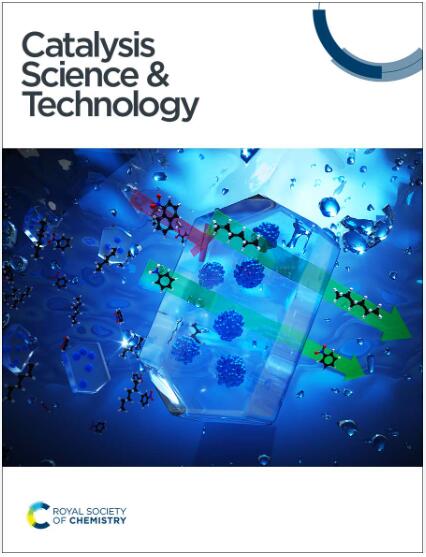Potential-driven sulfate coordinated active configuration for electrochemical C–H bond activation†
IF 4.4
3区 化学
Q2 CHEMISTRY, PHYSICAL
引用次数: 0
Abstract
Direct oxidation of methane (CH4) to methyl bisulfate (MBS) is a promising method to realize natural gas valorization and greenhouse gas emission mitigation. By integrating electrochemical methane oxidation with sulfuric acid-protected methane oxidation, problems hindering the practical use of direct methane oxidation processes such as low conversion rate and low selectivity caused by product overoxidation can be resolved. Here, we investigate the potential-dependent electrochemical methane oxidation behavior of a heterogeneous vanadium phosphate nanosheet catalyst in sulfuric acid solution for direct methane oxidation. This system achieves a maximum methane to MBS conversion current density of 92.66 μA cm−2 at the optimum anodic potential (2.9 V vs. Ag/AgCl reference electrode, 7 bar methane pressure), which is superior to the class of electrocatalytic heterogeneous materials for MBS production. In situ X-ray absorption spectroscopy investigating the dynamic chemical features of vanadium atoms reveals the potential-driven formation of a metal-sulfate active site configuration, which is a crucial observation that supports the occurrence of the electrochemical sulfate radical-induced methane oxidation mechanism. Our research provides a general understanding of the sulfuric acid-protected electrochemical methane oxidation reaction mechanism on a heterogeneous surface and states the relevance of in situ experiments to capture the relevant catalyst transformation behaviors that occurred during reaction conditions that provide new insights into the catalytic system's mechanism for future material engineering and computational screenings.

求助全文
约1分钟内获得全文
求助全文
来源期刊

Catalysis Science & Technology
CHEMISTRY, PHYSICAL-
CiteScore
8.70
自引率
6.00%
发文量
587
审稿时长
1.5 months
期刊介绍:
A multidisciplinary journal focusing on cutting edge research across all fundamental science and technological aspects of catalysis.
Editor-in-chief: Bert Weckhuysen
Impact factor: 5.0
Time to first decision (peer reviewed only): 31 days
 求助内容:
求助内容: 应助结果提醒方式:
应助结果提醒方式:


